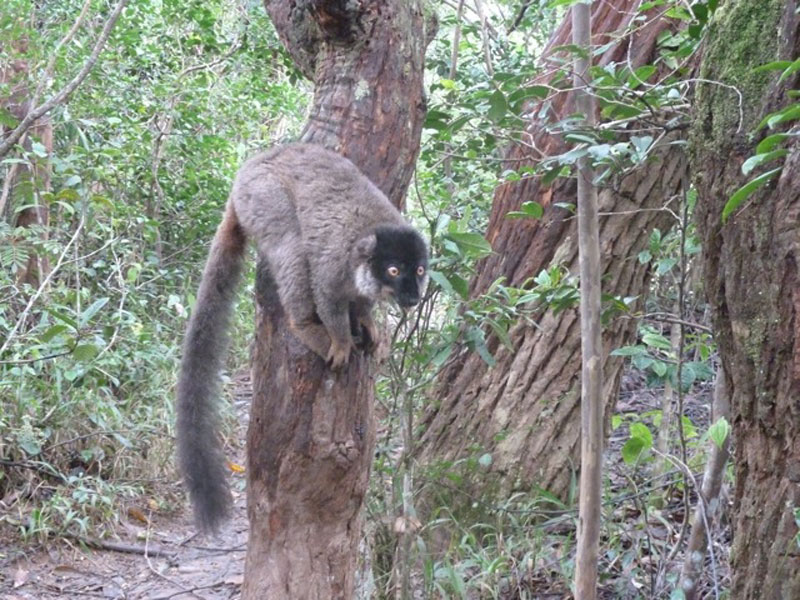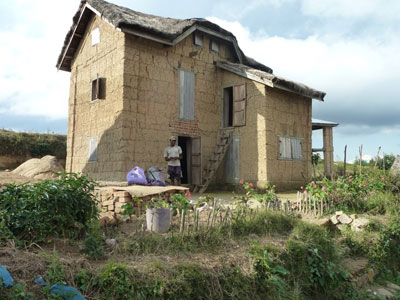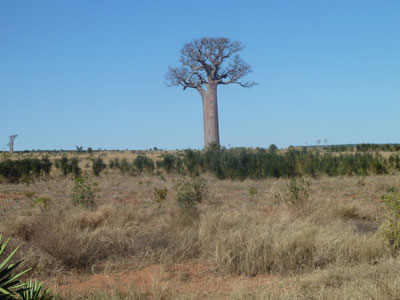Madagascar with Far Fung Places
This item appears on page 26 of the November 2014 issue.
Because of our interest in travel, nature and other cultures, my wife, Annie, and I visited Madagascar, traveling May 22-June 6, 2013, on a tour with Far Fung Places (San Francisco, CA; 415/386-8306, www.farfungplaces.com).
As elderly travelers (81 and 72 years old), we went with a company we knew to be reliable, enjoyable and safety conscious. We had traveled with Far Fung Places in 1999 to Laos, Vietnam and Cambodia and in 2000 to Bhutan.
Our tour cost was $7,828 per person, double occupancy, which included flights on South African Airways between Johannesburg, South Africa, and Antananarivo, Madagascar; two internal flights on Air Madagascar; hotels, including a night at Johannesburg’s airport and an extra night in Madagascar; meals, including mineral water; transport in excellent, comfortable, 4-wheel-drive vehicles (three travelers to a car), and tips to service personnel.
Flights from Illinois to Johannesburg cost $1,800 per person in coach class and were booked separately with the help of Kathleen Fung and African Travel (800/421-8907, www.africantravelinc.com). Direct flights between Atlanta and Johannesburg on Delta Air Lines took about 15½ hours going and 16½ hours returning.
The tour leader, Kathleen Fung, has been visiting Madagascar since 2001. Our chief tour guide, Harilala, was a Malagasy native who spoke good English as well as Malagasy and French. She was an expert on the history, plants, wildlife, ethnic makeup, economic conditions and political problems of Madagascar. The 4-man driver crew was courteous and necessarily skilled, for parts of the road system were in poor condition.
The food quality at our accommodations and at restaurants was good to excellent. French-style meals were available at all of our accommodations. Several tour members requested Malagasy food, which Harilala arranged with the chef. As advised, we avoided street foods and certain fresh vegetables.
The land tour started with our arrival at Hotel Colbert (29 Rue Prince Ratsimamanga, Antananarivo; hotel-restaurant-colbert.com), where we had an excellent room.
While in the capital, we visited the palace of Madagascar’s last king, where the local guide was outstanding. Later we saw the royal tombs and the nearby fire-damaged remains of the queen’s palace.
After two nights in Antananarivo (Tana), we departed on Highway 7 to start a 6-day journey through the central highlands. We soon entered the higher-altitude rural plateau region — a sharp contrast from the Westernized capital.
Over the next several days, we encountered ethnic groups that still practiced tribal customs and ceremonies. Throughout the tour, we saw examples of excellent irrigation techniques on terraces of vegetables and rice.
We visited several craftspeople who had established shops, sometimes in their living quarters, and occasionally we purchased high-quality items, such as fabrics or metal items made from recycled aluminum. Unique to us were carvings, bowls, spoons and more made from zebu (a type of cattle) horns.
While it was the “dry season,” our group was slightly dampened by rain once. Temperatures were usually moderate, from a cool 50°F up to a warm 80°. A light sweater or jacket was useful, and we were pleased to have long-sleeved shirts to prevent sunburn. The lack of a serious mosquito population during our visit was a welcome bonus, since that might not always be so.
After seeing superb scenery and staying overnight at the central highlands towns of Antsirabe and Fianarantsoa, we drove south to a flat, grassy plateau, heading toward Isalo National Park. Along the way, a short nature walk led us to an area of friendly lemurs that enjoyed being fed bananas.
In the vast open landscapes of dark grass, areas were being burned so new grass could grow and provide better grazing for zebu. Other areas were devoted to rice growing, and natives could be seen in the fields winnowing rice or transporting 40-pound sacks on their heads.
We enjoyed a memorable 3-night stay at the first-rate Satrana Lodge (Isalo National Park, Ranohira; www.hotel-isalo-lodge.com).
Our drive to the port city of Tuléar (Toliara) included short stops focusing on local burial customs and plant life.
After a night in Tuléar, the group flew to Fort Dauphin (Tôlanaro), then had a drive over rough roads to Gîte d’Etape (www.madagascar-resorts.com/pages/Berenty.html) inside the Berenty Reserve, a wildlife area on a privately owned sisal plantation of over 1,000 acres. A 2-night stay at the lodge included nature walks to see wild lemurs.
After a flight back to Tana and a coach transfer to the Perinet reserve (Andasibe-Mantadia National Park), we stayed two nights at the nearby Vakôna Forest Lodge (www.hotel vakona.com/en), another first-rate accommodation. We were treated to an extended nature hike through part of a dense forest, where wild lemurs and other shy creatures occasionally were seen.
On our drive back to Tana for a final night at Hotel Colbert, we stopped to view animals such as chameleons, frogs and more lemurs.
While in Madagascar, we became aware that the people there face many serious problems, such as poverty, a weak infrastructure, intense population pressures and an unstable government. The ability and spirit of the Madagascar natives in handling such adversity, along with their strong family ties, were impressive. We were always treated with courtesy and kindness by the locals.
On a scale of 1 to 10, we rate our visit to Madagascar a 10. Readers interested in further details may contact us by email at f1dint@sbcglobal.net.
FREDERICK DINTZIS
Peoria, IL



